Complete Solutions to worked out examples of chapter CAPACITORS of Class 12 book with complete answers and questions
| Class 12 | PHYSICS |
| Chapter | CAPACITORS |
| HC VERMA | worked out examples |
| Number Of Questions | 23 |
| Academic Year | 2023-24 |
A parallel plate capacitor has plates of area `200cm^2 and separation between the plates 1.00 mm. What potential difference will be developed if a charge of 1.00 nC )(i.e., 1.00X10^(-9) C) is given to the capacitor? If the plate separation is now increased to 2.00 mm, what will be the new potential difference?
View SolutionAn isolated sphere has a capacitance of 50 pF. (a) Calculate its radius. (b) how much charge should be placed on it to raise its potential ot `10^4 V`?
View SolutionConsider the connections shown in (a) Find the capacitance between the points A and B. (b) find the charge on the three capacitors. (c ) Taking the potential at the point B to be zero, find the potential at the point D.
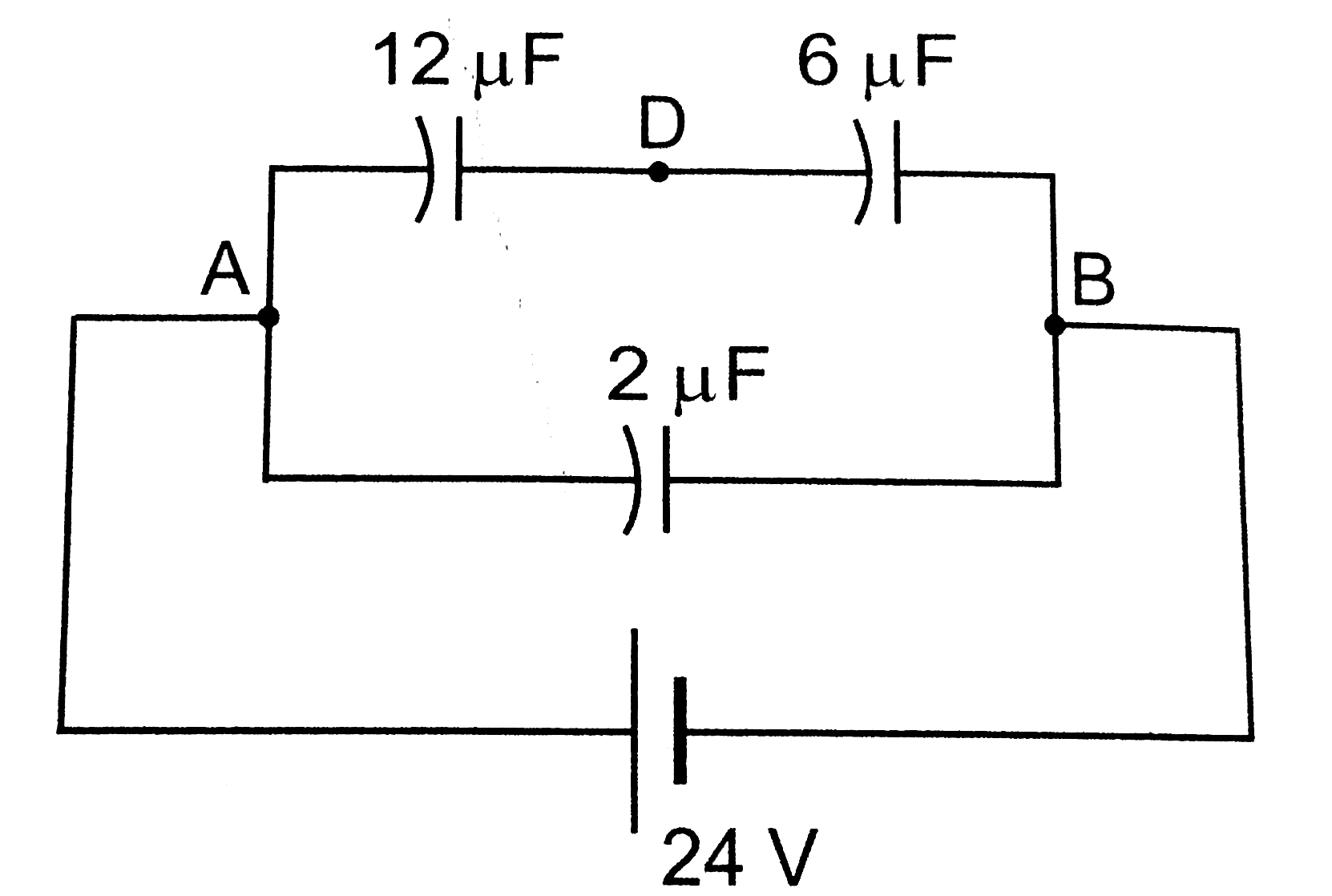
View SolutionIf 100 volts of potential difference is applied between a and b in the circuit of , find the potential difference between `c and d`.

View SolutionFind the charges on the three capacitors shown in figure
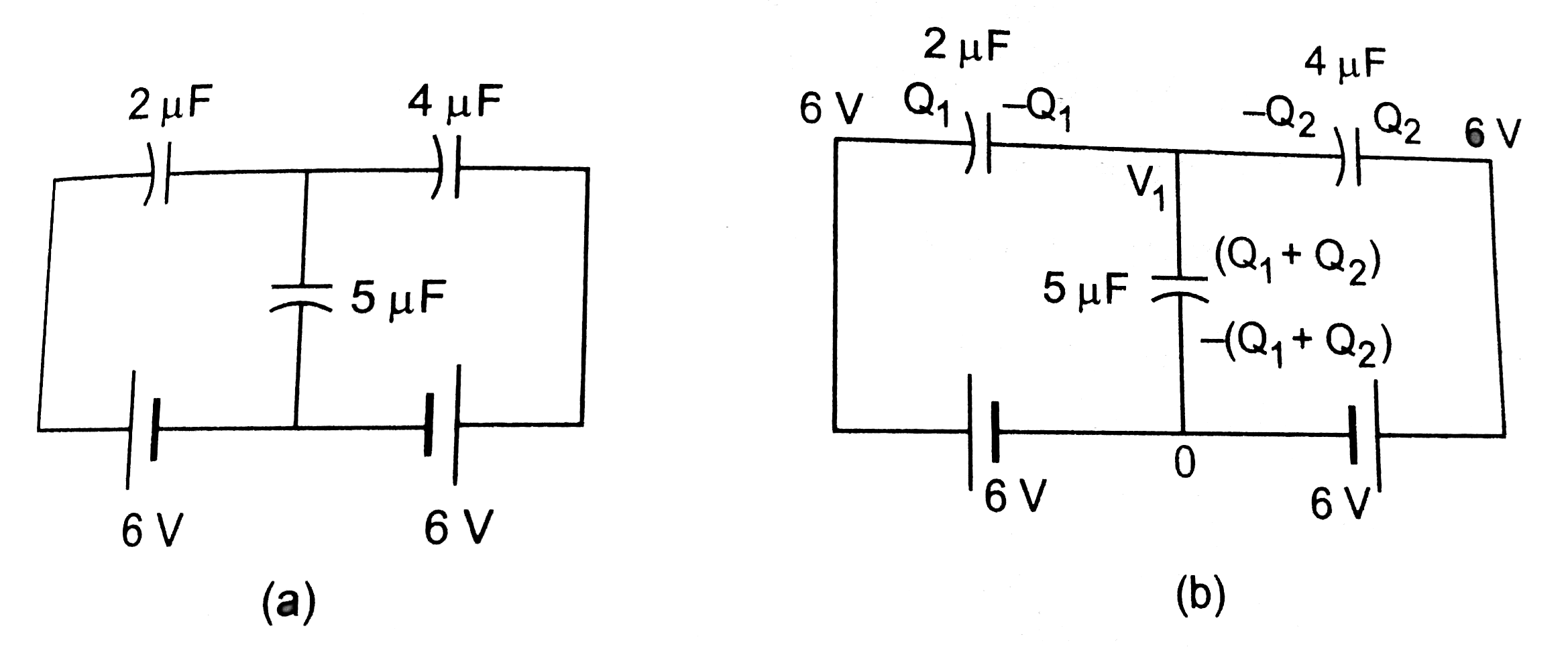
View SolutionFind the equivalent capacitance of the system shown in figure between the points a and b.
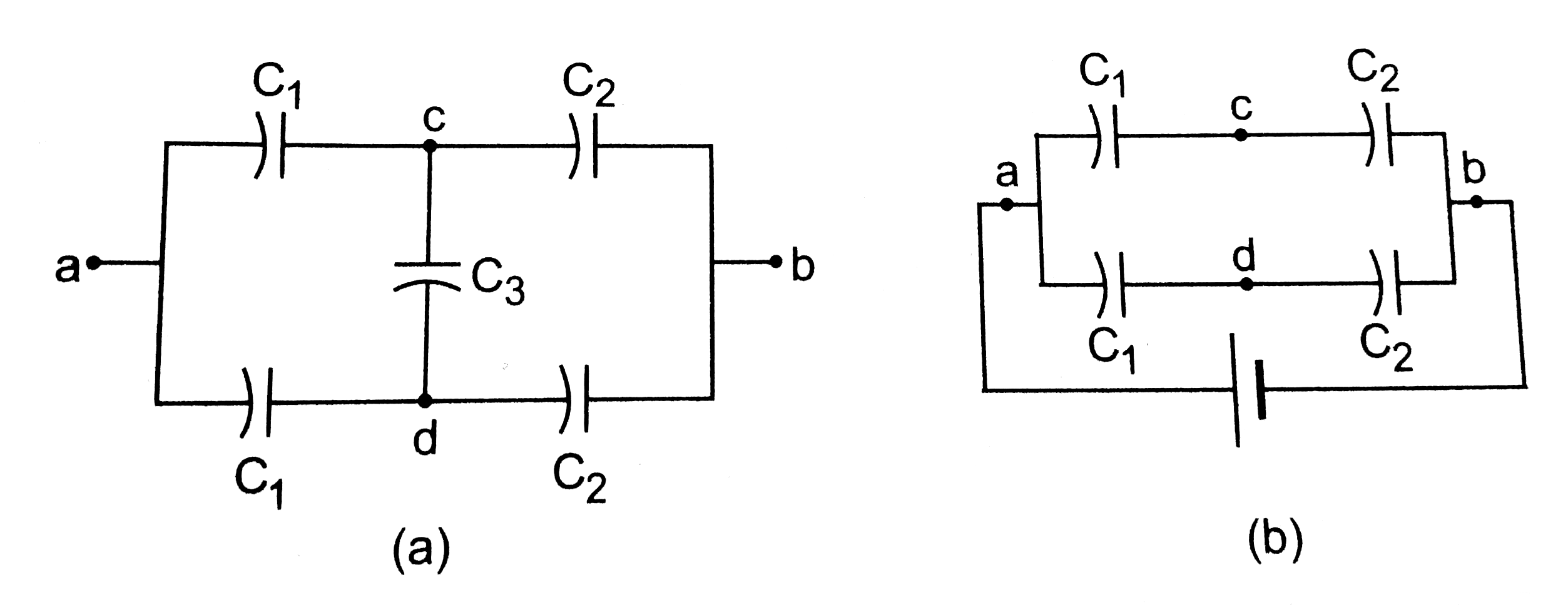
View SolutionFind the equivalent capacitance between the point A and B in figure .
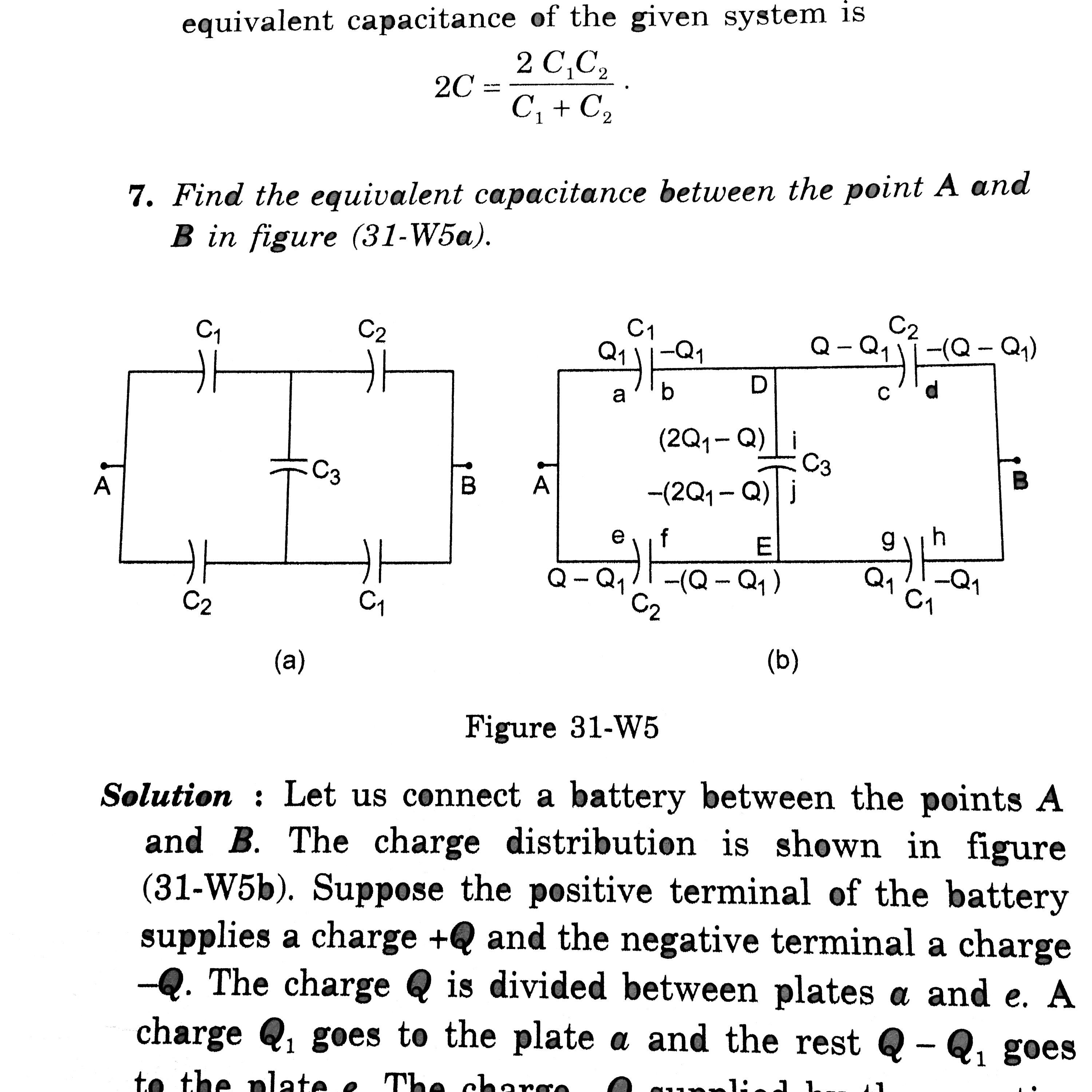
View SolutionTwelve capacitors, each having a capacitance C, are connected to form a cube . Find the equivalent capacitance between the diagonally opposite corners such as A and B.
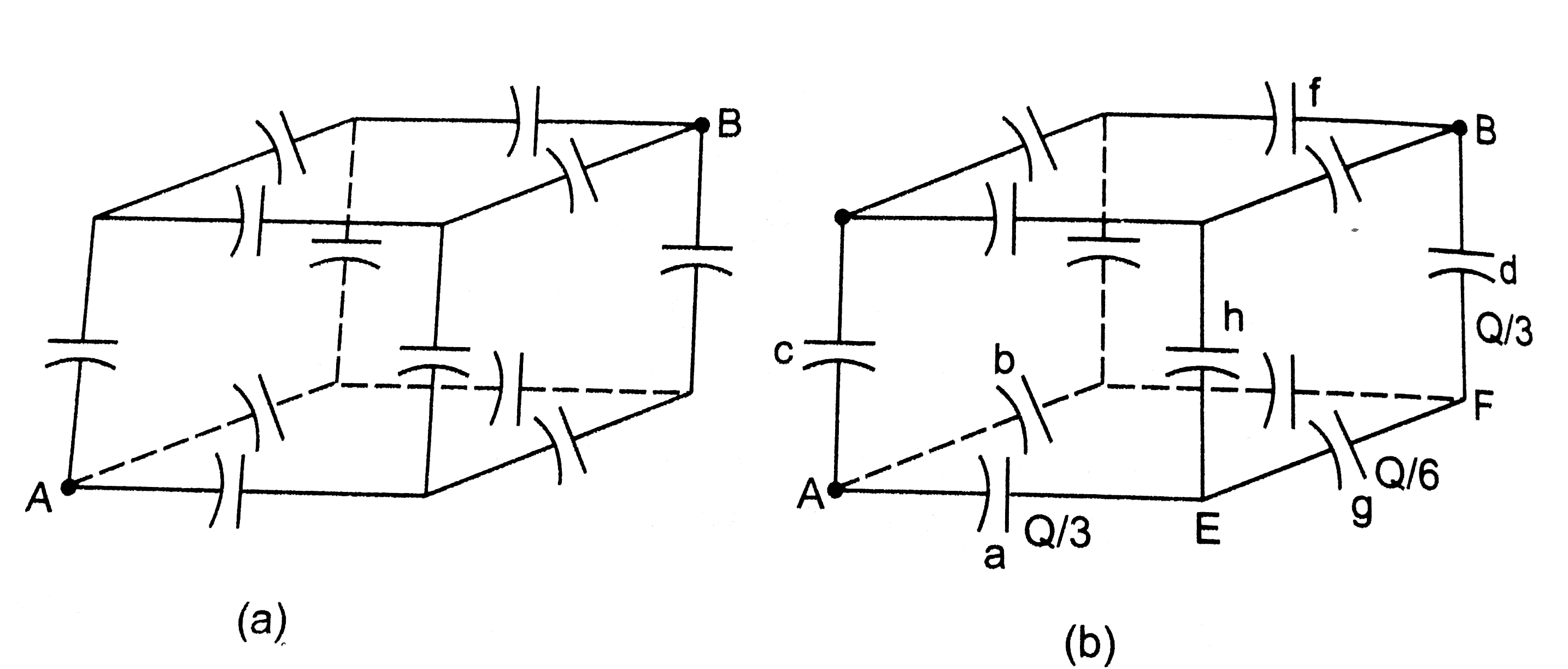
View SolutionThe nagative plate of a parallel plate capacitor is given a charge of `-20 X 10^(-8) C`. Find the charges appearing on the four surface of the capacitor plates.
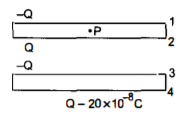
View SolutionThree capacitors of capacitances `2 muF`, `3mu F` and `6muF` are connected in series with a 12 V battery. All the connecting wire are disconnected, the three positive plates are connected together and the three negative plates are connected together. Find the charges on the three capacitors after the reconnection.
View SolutionThe connnections shown in figure are established with the swithc S open. How much charge will flow through the switch if it is closed?

View SolutionEach of the three plates shown in figure has an area of 200 cm^2 on one side and the gap between the adjacent plates is 0.2 mm. The emf of the battery is 20V. Find the distribution of charge on various surfaces of the plates. What is the equivalent capacitance of the system between the terminal points?
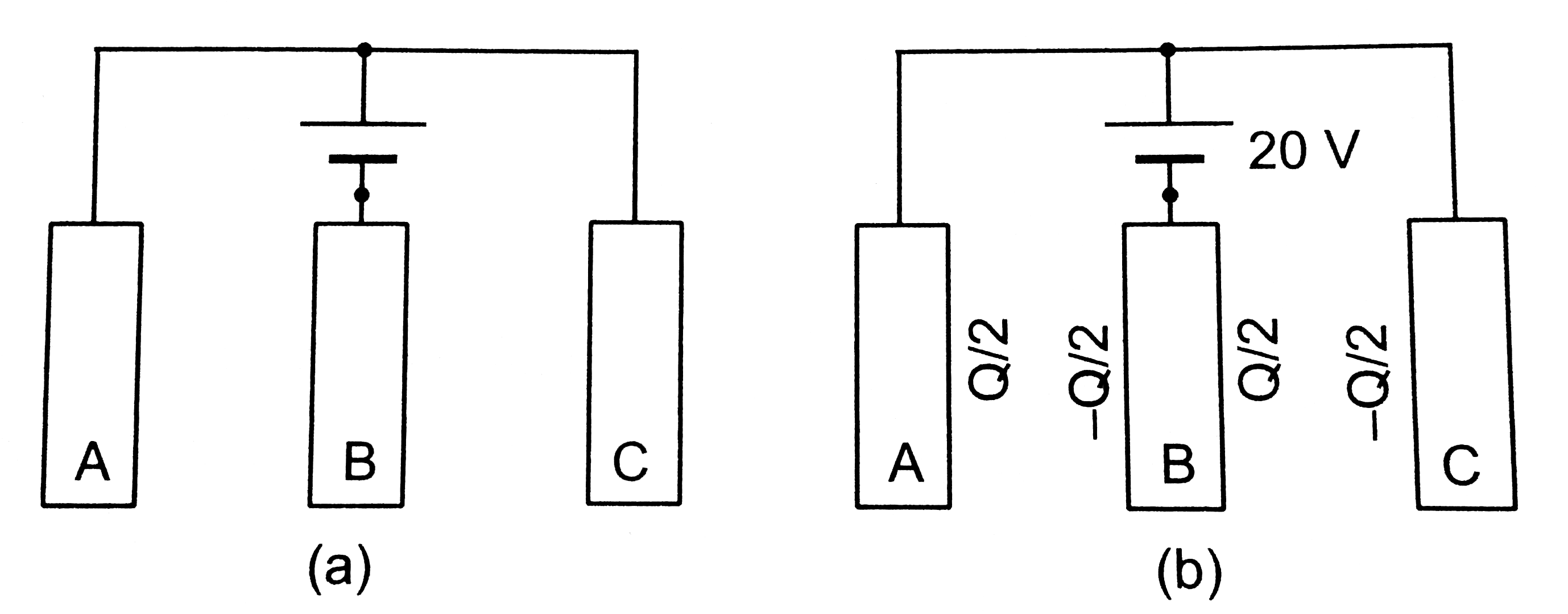
View SolutionFind the capacitance of the infinite ladder shown in figure.

View SolutionFind the energy stored in the electirc field produced by a metal sphere of radius R containing a charge Q.
View SolutionA capacitor of capacitance C is charged by connecting it to a battery of emf epsilon. The capacitor is now disconnected and reconnected to the battery with the polarity reversed. Calculate the heat developed in the connecting wires.
View SolutionAn uncharged capacitor is connected to a battery. Show that half the energy supplied by the battery is lost as heat while charging the capacitor.
View SolutionA parallel-plate capacitor having plate are `100 cm ^2` and separation 1.0 mm holds a charge of `0.12 muC` when connected to a 120 V battery. Find the dielectric constant of the material filling the gap.
View SolutionA parallel plate capacitor is formed by two plates, each of area `100 cm^2`, separated by a distance of 1 mm. A dielectric of dielectric constant 5.0 and dielectric strength `1.9 X 10 ^7 Vm^(-1)` is filled between the plates. Find the maximum charge that can be stored on the capacitor without causing any dielectric breakdown.
View SolutionThe space between the plates of a parallel plate capacitor of capacitance C is filled with three dielectric slabs of identical size as shown in figure. If the dielectric constants of the three slabs are `K_1 , K_2 and K_3` find the new capacitance.

View SolutionFigure shown a parallel-plate capacitor having square plates of edge a and plate-separation d. The gap between the plates is filled with a dielectric of dielectric constant K which varies parallel to an edge as where K and a are constants and x is the distance from the left end. Calculate the capacitance.

View SolutionA parallel plate capacitor of capacitance `100 microfarad is connected a power supply of 200 V. A dielectric slab of dielectric constant 5 is now inserted into the gap between the plates. (a) Find the extra charge flown through the power supply and the work done by the supply. (b) Find the change in the electrostatic energy of the electric field in the capacitor.
View SolutionShown a parallel plate capacitor with plates of width `b` and length `l`. The separation between the platesis d. The plates are rigidly clamped and connected to a battery of emf V. A dielectric slab of thickness d and dielectric constant K is slowly inserted between the plates. (a) Calculate the energy of the system when a length x of the slab is introduced into the capacitor. (b) what force should be applied on the slab to ensure that is goes slowly into the capacitor? Neglect any effect of friction or gravity.

View SolutionA parallel-plate capacitor is placed in such a way that its plates are horizontal and the lower plate is dipped into a liquid of dielectric constant `K` and density `rho`. Each plate has an area `A`. The plates are now connected to a battery which supplies a positive charge of magnitude `Q` to the upper plate. Find the rise in the level of the liquid in the space between the plates. (figure)

View Solution
worked out examples questions and complete solutions for chapter CAPACITORS of HC VERMA PHYSICS (ENGLISH) of Class 12